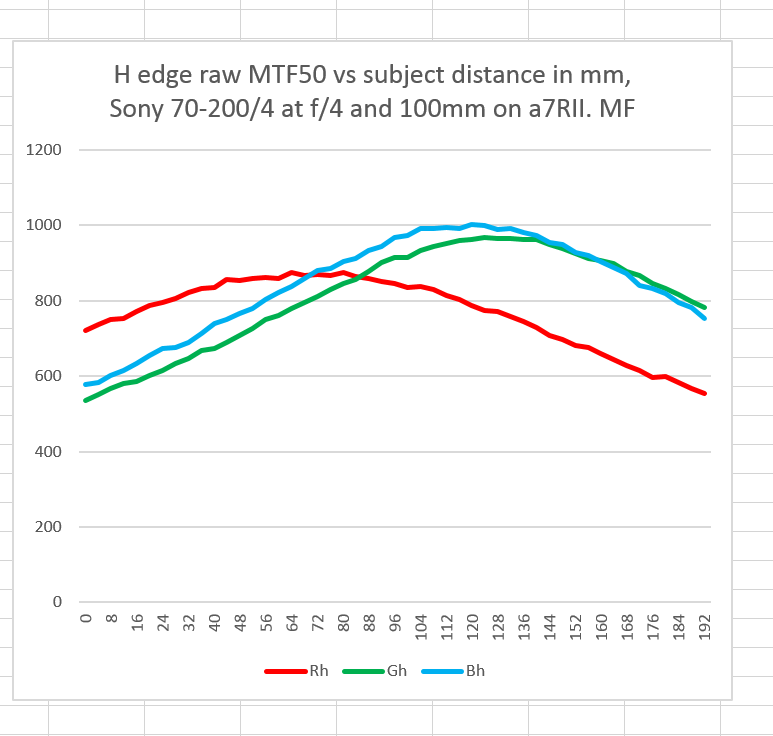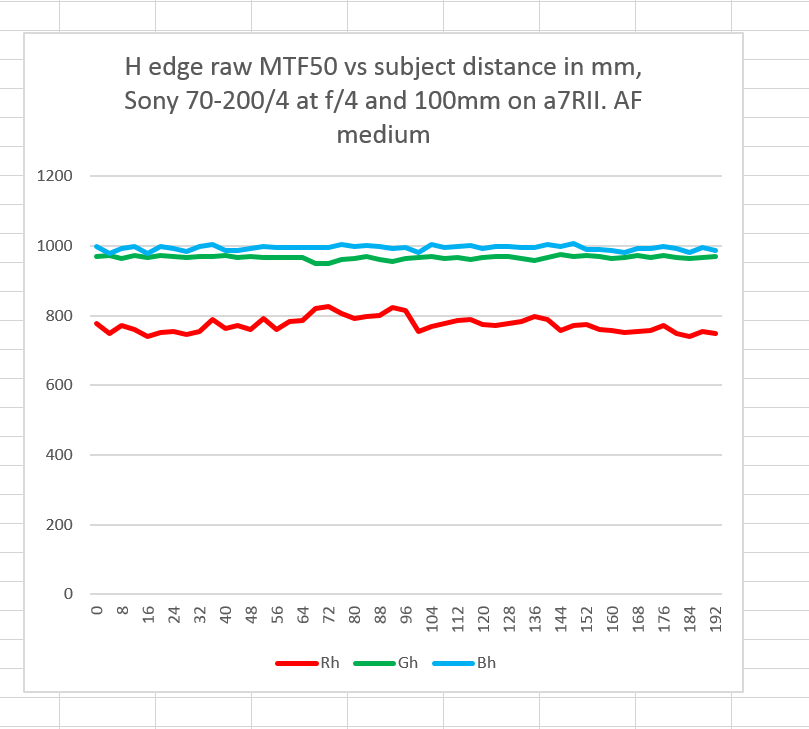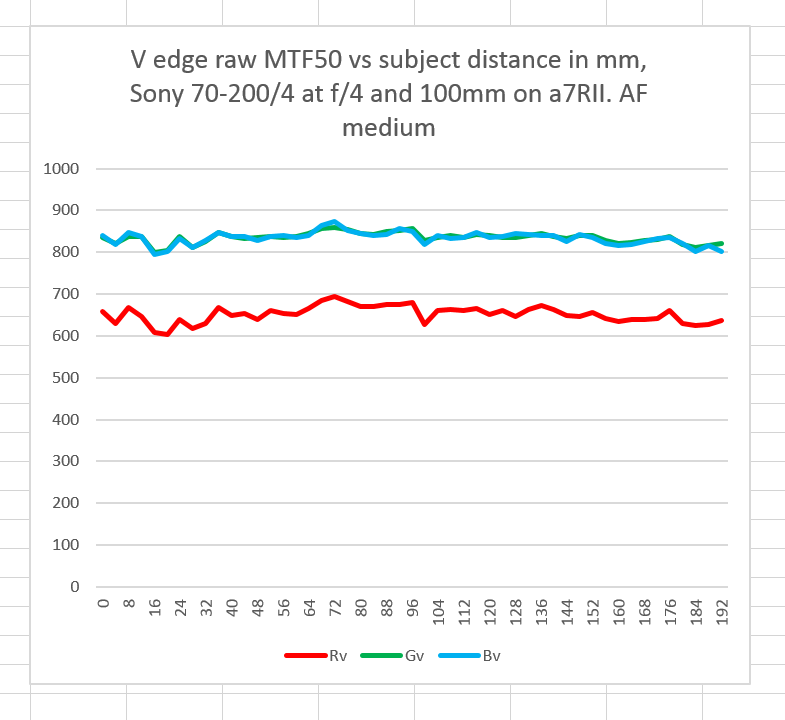While testing a group of medium tele lenses on the Sony a7RII, I came up with a way to examine longitudinal chromatic aberration (LoCA). Then I noticed that the a7RII’s autofocus (AF) optimized the red raw plane with the Batis 85. That seemed strange. I tested the Sony/Zeiss (Zony) 35mm f/2.8, the Zony 55/1.8, and the Sony 90mm f/2.8 macro, and found that they behaved as expected. Today I’m taking a look at the Sony 70-200mm f/4 OSS G at 100mm indicated focal length.
I lit a slanted-edge target with two Westcott LED panels, and set the color temperature to 5000K. I mounted a Sony a7RII with the lens set to 100mm and attached to the Cognisys computer-driven focusing rail. I set the controller up to use 192mm of travel and make 49 exposures 4mm apart. I set the assembly 10 feet from the on-axis target, mounted the lens, focused a little short of mid-rail using manual focusing, and focused on the grid using AF-S with flexible spot, AF priority, and small and medium spot sizes in turn. I exposed 49-shot series with the lens wide open. I used Jack Hogan’s Matlab program, MTF Mapper, and DCRAW to pick the horizontal edges and calculate the MTF50s for the raw color planes, imported the data into Excel, and plotted the results in cycles per picture height vs subject distance change.
Manual focus — or, more properly, no focusing, for horizontal edges:
And no focusing for vertical edges:
Some astigmatism is apparent, with the vertical edges not being as sharp as the horizontal ones.
With AF on and set to a medium spot size, for horizontal edges:
And for the vertical edges:
The autofocus is working just like you’d want it to work.




Leave a Reply